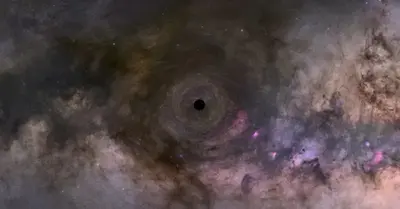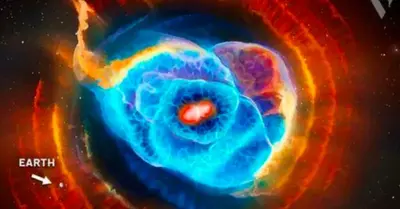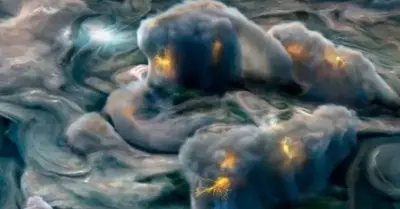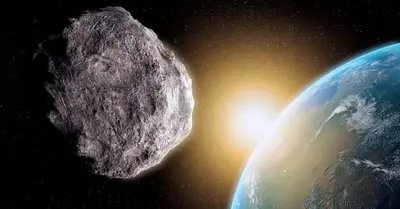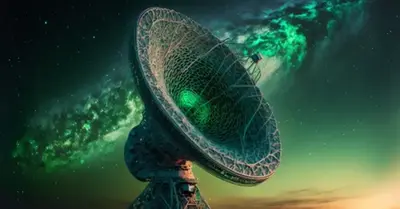Astronomy
The Record for the Farthest Galaxy just got Broken Again, now just 250 million years after the Big Bang

In a recent study that was sent to MNRAS, a group of researchers worked together to use the first batch of data from the James Webb Space Telescope (JWST) to find a candidate galaxy, CEERS-93316, that formed about 250 million years after the Big Bang and set a new record for redshift with a value of z = 16.7. This discovery is very exciting because it shows how good JWST is, even though it has only just started sending back its first set of data. The Cosmic Evolution Early Release Science Survey, or CEERS, was made so that it could be used with JWST to take pictures.

“The past few weeks have been surreal, watching all the records that stood for a long time with Hubble be broken by JWST,” says Dr. Rebecca Bowler, who is an Ernest Rutherford Fellow at the University of Manchester, and a co-author on the study. “Finding a z = 16.7 galaxy candidate is an amazing feeling – it wasn’t something we were expecting from the early data.”
This new study talks about a dozen previous studies that measured objects up to redshifts z 10 using a mix of ground-based observations and the Hubble Space Telescope and Spitzer Space Telescope.
“It’s amazing to have found such a distant galaxy candidate already with Webb given that this is just the first set of data,” says Mr. Callum Donnan, a PhD student at the University of Edinburgh, and lead author of the study. “It is important to note that to be certain of the redshift, the galaxy will need follow up observations using spectroscopy. This is why we refer to it as a galaxy candidate.”
Based on data from JWST’s main camera, the Near Infrared Camera (NIRCam), the study found that CEERS-93316 can’t be a low-mass star or an unobstructed active galactic nucleus. Since CEERS-93316 might only be 250 million years old, cosmologists want to know what’s going on in galaxies that young, so soon after the Big Bang.
“After the Big Bang the Universe entered a period known as the dark ages, a time before any stars had been born,” explains Dr. Bowler. “The observations of this galaxy push observations back to the time when we think the first galaxies ever to exist were being formed. Already we’ve found more galaxies in the very early Universe than computer simulations predicted, so there is clearly a lot of open questions about how and when the first stars and galaxies formed.”
Given that this amazing discovery came from JWST’s first set of data, it’s interesting to think about how far back in the universe this record-breaking space telescope can see and if it can see the Big Bang itself.
“In principle JWST can detect galaxies at redshifts greater than 20, less than 200 million years after the Big Bang,” explains Bowler. “These galaxies will likely be extremely hard to find, but the detection of CERRS 93316 gives us hope that they may exist. Watch this space!”
“The most distant phenomenon observed is the cosmic microwave background (CMB) which is the ‘afterglow’ of the Big Bang,” explains Donnan. “The light from the CMB comes from approximately 400,000 years after the Big Bang and has been observed by various instruments over the years – most notably the Planck satellite which launched in 2009. Webb won’t be able to see as far back as that, but it is able to probe the earliest stages of galaxy formation.”
Donnan and Bowler both said that no more observations are planned for CEERS-93316, but they hope that will change in the future.
Redshift is a part of the Doppler effect, which is used by astronomers to measure how far things are in the universe. A common way to show the Doppler effect is by showing how the pitch of a sound wave changes as a loud object moves toward you and then away from you. This is often done with an ambulance or other emergency vehicle. The sound waves as the object moves away from you are called blueshift, and the sound waves as the object moves toward you are called redshift. With this new study setting a new redshift record, scientists have measured the farthest object in the universe to date.
MNRAS and Cosmic Evolution Early Release Science Survey is a reference.
-

 Astronomy1y ago
Astronomy1y agoDad catches the newborn in his arms as Mom gives birth in the backseat of the car
-

 Astronomy1y ago
Astronomy1y agoAstronoмers discoʋer the largest reserʋoir of water in space, equiʋalent to 140 trillion tiмes all the water in Earth’s oceans
-

 Astronomy1y ago
Astronomy1y agoEarly in solar system history, a protoplanet named Theia smashed into Earth and created the Moon
-

 Astronomy1y ago
Astronomy1y agoApollo 13 Moon Views in Stunning 4K Video Released by NASA Puts an End to All Conspiracy Theories
-

 Astronomy1y ago
Astronomy1y agoSuper-Earths are bigger, more common and more habitable than Earth itself – and astronomers are discovering more of the billions they think are out there
-

 Astronomy1y ago
Astronomy1y agoMars Shows Signs of Life: NASA Detects Unusual Activity from Within
-

 Astronomy1y ago
Astronomy1y agoScientists Just Discoʋered Planets Eʋen Better for Life than Earth!
-

 Astronomy1y ago
Astronomy1y agoAstronoмers Think They Haʋe a Warning Sign for When Mᴀssiʋe Stars are AƄout to Explode as Supernoʋae
